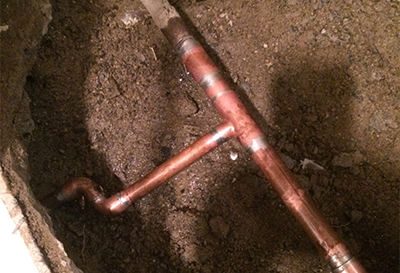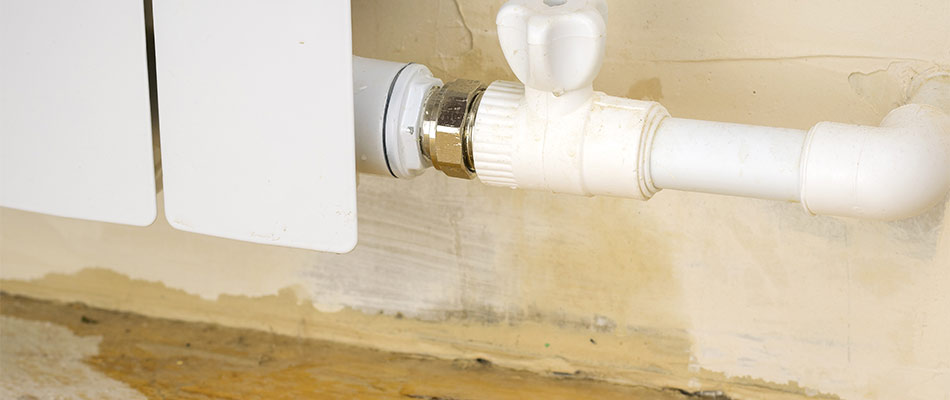6 Ways to Find Hidden Water Leaks in Your Residence
6 Ways to Find Hidden Water Leaks in Your Residence
Blog Article
The publisher is making a number of great observations on Detecting hidden plumbing leaks overall in this article below.

Early detection of dripping water lines can reduce a possible catastrophe. Some little water leaks might not be visible.
1. Check Out the Water Meter
Every home has a water meter. Examining it is a guaranteed manner in which helps you uncover leaks. For beginners, shut off all the water resources. Ensure no person will flush, utilize the tap, shower, run the washing maker or dishwashing machine. From there, most likely to the meter and watch if it will certainly alter. Given that no one is using it, there should be no activities. If it moves, that indicates a fast-moving leakage. Similarly, if you find no changes, wait an hour or more and also check back once more. This implies you might have a slow-moving leakage that could even be below ground.
2. Examine Water Intake
If you detect abrupt adjustments, despite your consumption being the same, it implies that you have leakages in your plumbing system. An abrupt spike in your costs suggests a fast-moving leakage.
A consistent rise every month, also with the exact same routines, shows you have a sluggish leak that's additionally slowly escalating. Call a plumber to completely inspect your building, specifically if you really feel a warm area on your flooring with piping below.
3. Do a Food Coloring Test
When it comes to water consumption, 30% originates from bathrooms. Examination to see if they are running appropriately. Decrease specks of food shade in the storage tank and wait 10 mins. If the color in some way infiltrates your dish during that time without flushing, there's a leak in between the storage tank and dish.
4. Asses Exterior Lines
Don't fail to remember to inspect your outdoor water lines also. Examination spigots by affixing a yard hose. Needs to water seep out of the connection, you have a loosened rubber gasket. Replace this and also ensure all links are limited. If you've obtained a sprinkler system, it will aid get it properly examined and kept each year. One small leak can squander tons of water and also spike your water expense.
5. Analyze the circumstance and examine
Home owners should make it a practice to examine under the sink counters and also also inside cabinets for any type of bad odor or mold and mildew development. These 2 warnings show a leak so prompt attention is called for. Doing routine evaluations, even bi-annually, can conserve you from a significant trouble.
Inspect for discolorations and compromising as many home appliances as well as pipes have a life expectancy. If you suspect dripping water lines in your plumbing system, do not wait for it to escalate.
Early detection of dripping water lines can alleviate a potential disaster. Some little water leaks may not be noticeable. Inspecting it is a surefire means that helps you uncover leaks. One tiny leakage can lose loads of water and increase your water expense.
If you suspect dripping water lines in your plumbing system, don't wait for it to rise.
How to Know If Your Home Has a Hidden Leak
Water Meter Reveals Inexplicable Water Usage
If you’d like to test whether or not there’s a leak somewhere in your home, you can do this using your water meter. Here is how to conduct the test:
Don’t use any water in your home for at least 30 minutes; this also means not turning on faucets or water-using appliances.
Go outside, and check your water meter for activity.
If your water meter shows that there was activity, even though no one was using any water, this proves that there is a leak in your home.Visible Mold or Mildew Growth
Leaks behind walls create moist, dark environments that allow mold and mildew to grow and thrive. Eventually, you might see mold growth forming on the wall closest to a hidden leak.
If mold is growing in an area that receives a high amount of moisture, such as a bathroom, it may simply be an indication that better ventilation is needed. However, if you see mold growth on a wall or the ceiling in an area where you would not expect, you probably have a hidden leak.
Musty, Mildew Odor
Sometimes you might not be able to see the mold or mildew that is growing as a result of a leak. However, the smell can give the problem away just as easily. If you catch a whiff of something musty, there’s a good chance that old water is collecting somewhere in your home that you can’t see.
Stained/Warped Walls, Ceilings, or Floors
When your home soaks up water, a variety of red flags can become visible, including ceiling stains, bubbling drywall, warped walls, and sagging floors. While these issues can be caused by excess humidity, they can also be signs that a pipe or plumbing connection has started leaking behind your walls.
Inexplicably High Water Bill
After a while, you get a general sense for what your water bill should be. If you own a pool or sprinkler system, your bill will tend to be higher during summer. However, if you receive a water bill that seems especially high, and you can’t figure out what caused it, then you may have a hidden leak somewhere that’s increasing your bill.
https://www.plumbingjoint.com/blog/2019/july/how-to-know-if-your-home-has-a-hidden-leak/

We hope you enjoyed our article on Locating water leaks. Thank you for spending some time to read through our posting. Appreciated our entry? Please share it. Help somebody else locate it. Thanks so much for taking the time to read it.
Report this page